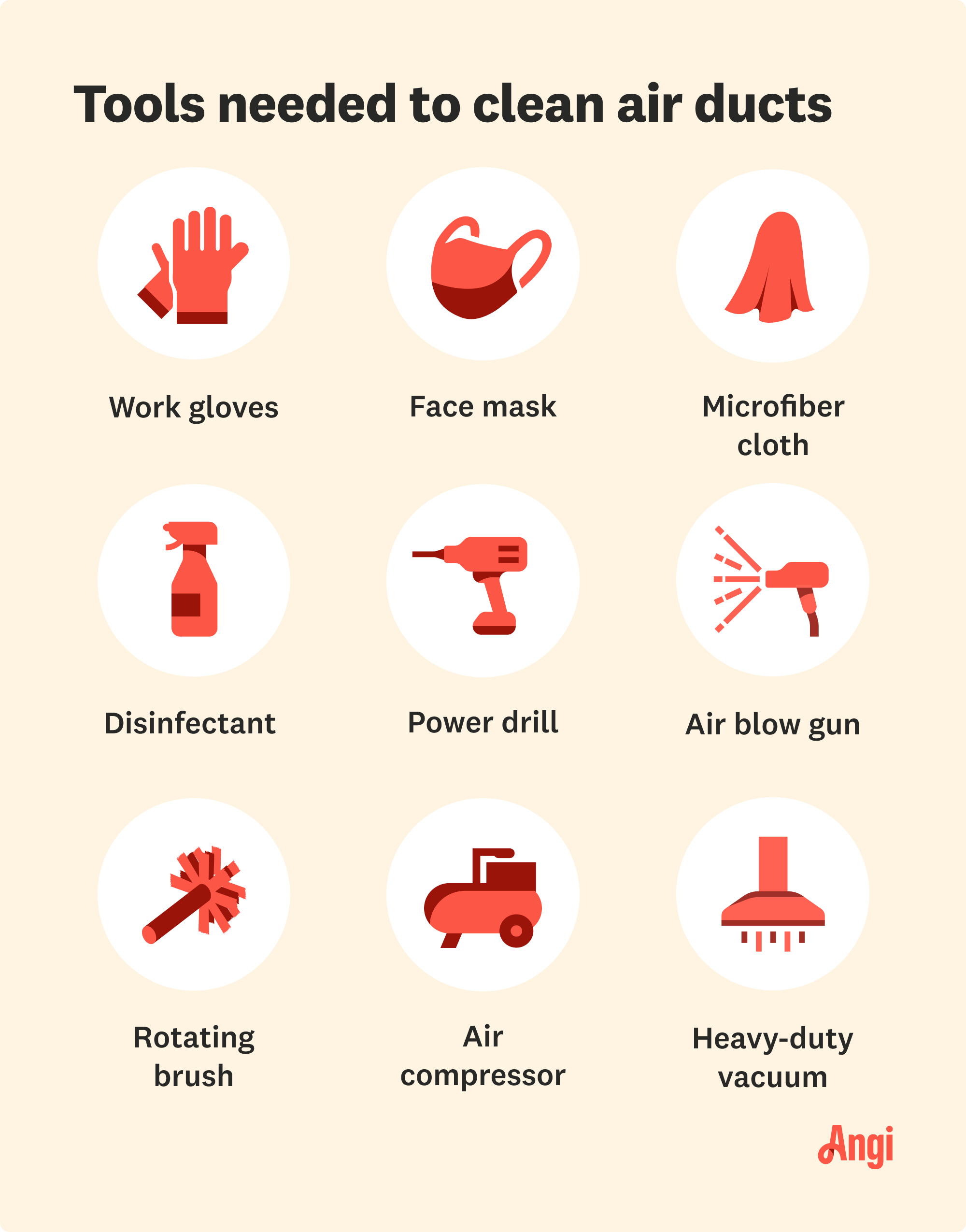
Curious about air duct cleaning costs? Get insights into pricing factors, benefits, and how to tell when it’s time for a good cleaning.
Get that gunk out of your system (carefully)


With ridges and nooks and crannies, flexible ductwork can trap dust in a lot of places.
You can clean flexible air ducts, but it's best to hire a professional to do the job.
When there's extensive damage, replacing the ductwork is a better option.
Your HVAC system sends heated or cooled air throughout your home, keeping you warm and cozy or cool and comfortable, depending on the season. Over time, dust and debris can build up in the ducts, affecting the efficiency of your system. While you may be familiar with cleaning rigid ducts, you may wonder if flexible air ducts can be cleaned. The answer is yes, but to avoid damaging the ducts, you should hire a pro to clean them.
Flexible ductwork is made from aluminum, PVC, or aluminum coated with PVC. Unlike rigid ducts, which are made from sturdy aluminum or steel, flexible ducts can bend and flex, making them ideal for use in cramped spaces or around tight corners.
You can clean flexible ductwork yourself, or at least hire someone who cleans air ducts to do the job.
A professional air duct cleaner will use the right tools for the job to ensure that they remove any dirt and debris from inside the duct and that they don't cause damage. Flexible ducts are much more fragile than rigid ductwork. They also break down more easily, so whoever does the cleaning job needs to be extra careful.
One of the biggest advantages of cleaning flex ducts is that it can improve airflow in your home. When the ducts become full of dust and debris, it's more difficult for air to filter through, causing your HVAC system to work harder.
Cleaning your home's air ducts can also lower your exposure to allergens.
However, cleaning flexible ducts involves risk, especially if you try to do it yourself or hire someone who's not familiar with the care and attention flexible ductwork requires. The ducts can be easily torn or the insides damaged during the cleaning process, meaning you may end up needing to replace the entire duct.

Thorough air duct cleaning takes specialized equipment to remove dust, debris, and allergens without damaging the ductwork. Inspecting the ducts before cleaning helps prevent accidental punctures, especially in flexible materials. Here’s how the process works:
A high-powered vacuum creates negative pressure to pull contaminants out of the ducts.
Rotary brush loosens dirt and debris from duct walls for easier removal.
Compressed air tools dislodge stubborn buildup in hard-to-reach areas.
Remember, hiring a professional ensures the job is done correctly, reduces the risk of damage, and keeps your system running efficiently.
Typically, air duct cleaning costs around $390, though prices can vary between $150 and $800. For homeowners, it is worth the expense because your duct system is responsible for maintaining indoor air quality. Occasional cleaning helps remove contaminants like dust and mold and keeps your home's air fresh. Lastly, and just as important, cleaning keeps your HVAC system running smoothly.
Whether you have flexible air ducts, rigid ducts, or a combination of the two, cleaning ductwork is a job to leave to the professionals. A local air duct cleaner will have the specialized equipment needed to effectively remove dirt and dust from your ducts with little risk of damage. A pro will also have the know-how required to handle delicate, flexible ductwork without tearing or otherwise destroying it.
From average costs to expert advice, get all the answers you need to get your job done.

Curious about air duct cleaning costs? Get insights into pricing factors, benefits, and how to tell when it’s time for a good cleaning.

Whole-house air purifier costs depend on a variety of factors, including your home’s size and layout. The type of purifier you choose matters, too.

Using in-duct air purifiers removes odors and other airborne germs while helping your HVAC system operate more efficiently.

Wondering what’s causing that noisy air vent in your bedroom? Here are some of the most common culprits—and how to deal with them.

Can air duct cleaning cause damage to your home’s duct system? Yes, if it’s done incorrectly. Here’s how to prevent that from happening.

How long does air duct cleaning take? It may take three to four hours (or more or even less). Explore the factors that can shorten or lengthen that timeframe.